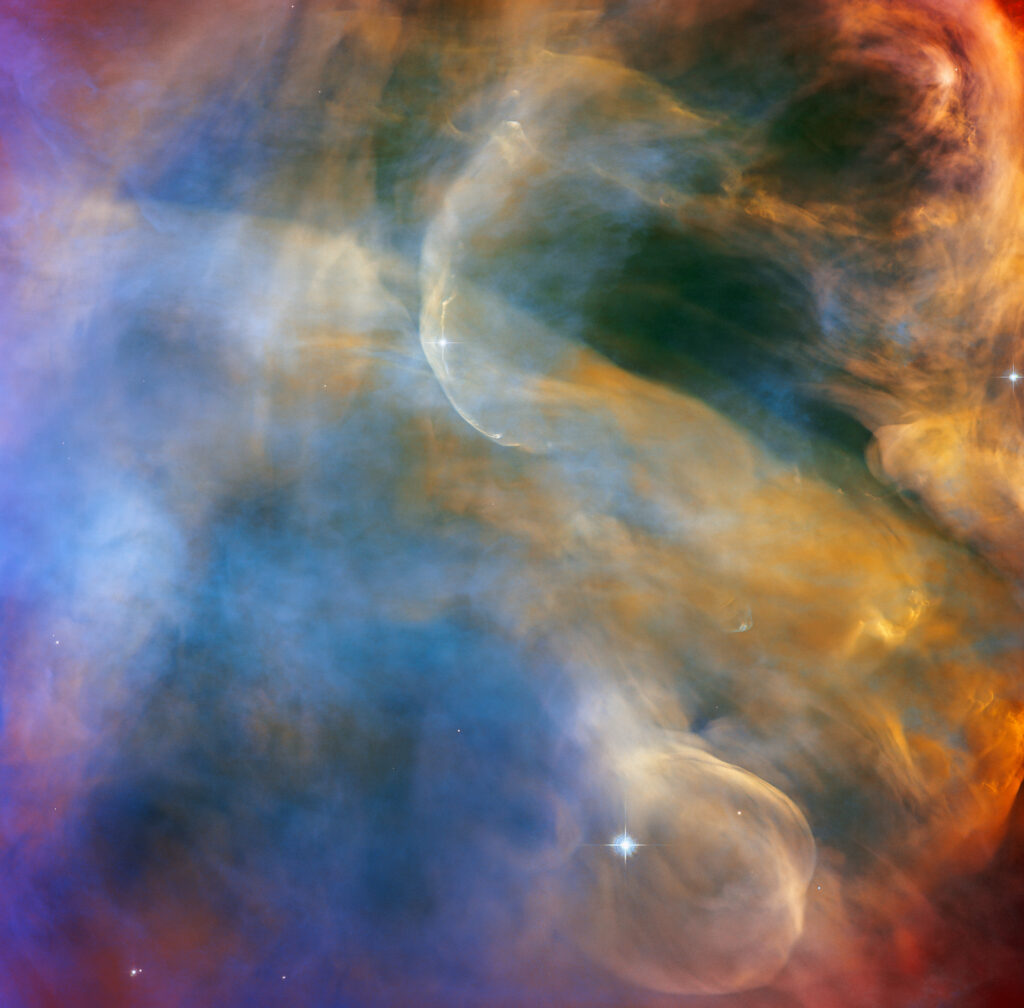This colorful image was posted on the Hubble mission website. It demonstrates a section of the Orion Nebula, one of the regions of active star formation closest to Earth.

The Orion nebula is a huge accumulation of gas and dust, in the depths of which thousands of new stars are being formed right now. Due to its proximity to Earth (it is located at a distance of 1,350 light-years from the Solar System), the Nebula is a very popular object for observations by both amateur astronomers and the world’s most powerful observatories, such as the Hubble Space Telescope.
The presented image demonstrates the colorful area around the Herbig-Haro object HH 505. Such structures are the product of the activity of newborn stars surrounded by protoplanetary disks. Under some circumstances, their interaction with matter from the disk can lead to the formation of jets consisting of ionized gas. Simply put, the newborn luminary begins to throw matter into the surrounding space.
In the case of HH 505, these emissions come from the star IX Ori, which is located on the outskirts of the Orion nebula about 1,000 light-years from Earth. The matter flows themselves are visible as elegantly curved structures in the upper and lower parts of the image. They are distorted into tortuous curves due to interaction with large-scale gas and dust flows from the nebula core. It is worth saying that the Herbig-Haro objects are a very short-term phenomenon by astronomical standards. In just a few tens of thousands of years, they completely dissipate in interstellar space.
The image of the HH 505 was taken using the ACS camera installed on board the Hubble. The image was obtained as part of a larger project aimed at creating the most detailed mosaic of the Orion Nebula. It will reveal previously unknown flows of matter, which will allow astronomers to better understand the processes accompanying the formation of new stars.
According to https://esahubble.org
Follow us on Twitter to get the most interesting space news in time
https://twitter.com/ust_magazine

